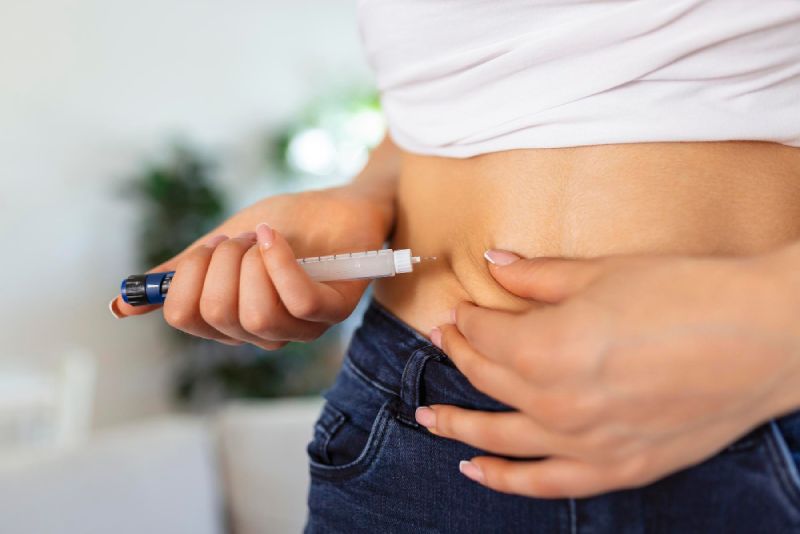Insulin Injection Sites
Insulin is most commonly administered via injection under the skin, a method known as subcutaneous injection. For the insulin to work correctly, it is important to choose the right injection sites. There are several appropriate areas on the body to inject insulin, including:
Abdomen
The abdomen is one of the most common areas for insulin injection. The insulin is absorbed quickly and consistently in this area. When injecting insulin into the abdomen, make sure to stay at least two inches away from the belly button and any scars.
Thighs
The front and side areas of the thighs are another common injection site. Insulin absorption from the thighs is slower than from the abdomen, making it a good option for certain types of insulin or at certain times of day.
Upper Arms
The fatty area on the back of the upper arm, between the shoulder and the elbow, is also a suitable place for insulin injection. However, it might be difficult to reach this area to self-inject.
Buttocks
The upper, padded area of the buttocks can also be used as an insulin injection site. Like the thighs, insulin absorption from the buttocks is relatively slow.
Where should insulin not be injected?
There are certain places on the body where insulin injections should be avoided for various reasons. These include:
Muscle Tissue
Insulin should not be injected into the muscle, as it can absorb insulin too quickly and cause hypoglycemia (low blood sugar). For this reason, it’s important to pinch up the skin (if instructed by your healthcare provider) to ensure you’re injecting into fatty tissue, not muscle.
Near the Belly Button
Avoid injecting insulin within a two-inch radius around the belly button. The tissue in this area may be tougher, which can lead to more painful injections and affect insulin absorption.
Scar Tissue and Skin Lesions
Insulin should not be injected into scars, moles, or skin that is irritated, reddened, or hardened. These areas may affect how the insulin is absorbed.
Lipohypertrophy Sites
Lipohypertrophy refers to lumps or thickened skin that can form if the same injection site is used too frequently. Injecting insulin into these areas can affect how the insulin is absorbed and should be avoided.
Limbs Prior to Exercise
Avoid injecting insulin into a limb that will be used for exercise shortly after the injection. Exercise increases blood flow and could cause the insulin to be absorbed too quickly.
Always follow the advice of your healthcare provider when choosing insulin injection sites. Regular rotation of the injection site can also help prevent lipohypertrophy and ensure more predictable insulin absorption.
Insulin Injection Tips
Regardless of where you inject, there are a few important tips to follow:
- Rotate Injection Sites: Injecting into the same spot repeatedly can cause hard lumps or extra fat deposits to develop, a condition known as lipohypertrophy. These lumps can change the way insulin is absorbed, making it less predictable. To prevent this, rotate your injection sites within the same general area.
- Clean the Injection Site: Clean the injection site with an alcohol wipe before injecting to reduce the risk of infection.
- Use a New Needle Each Time: Reusing needles can lead to infection and lipohypertrophy. It can also make injections more painful as needles can become dull with use.
Always consult with a healthcare professional for proper insulin injection technique and site rotation.
Remember, proper insulin administration is a crucial part of managing diabetes effectively.
